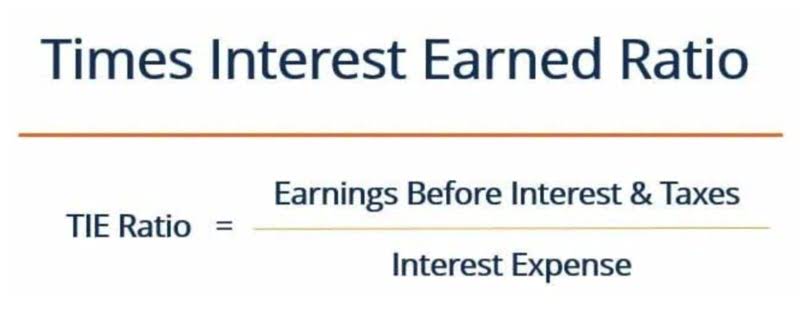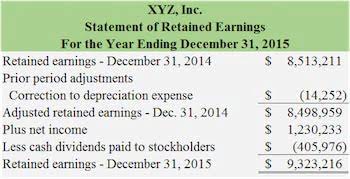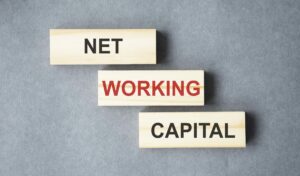Bookkeeping
It merely means that the cost is recognized within the period by which it was incurred somewhat than being unfold out over multiple durations. Since capitalizing can enhance property and boost earnings, firms often select to capitalise as a substitute of expensing. On the opposite hand, companies would possibly occasionally try to bring down earnings by expensing, as this might decrease the company’s tax burden. Even if you will hold on to the stock long-term and won’t be promoting it in the course of the next business cycle, you cannot capitalise the expenses. Company A has recognised $4,000 in income and $3,000 in expenses throughout a financial 12 months. The company has additionally incurred $500 in restore and upkeep prices for its tools, but it hasn’t but decided whether or not to capitalise or expense this amount.
Other eventualities necessitating capitalization include expenditures that improve, extend, or considerably enhance an current asset. Capitalized prices are mirrored in the investing activities part, as they are considered long-term investments. Expensed prices, on the opposite hand, seem within the working actions section, impacting the company’s operating cash move.
- Bills, on the other hand, are the costs incurred within the day-to-day operations of a business.
- Nonetheless, if the compensation is for work that will profit future periods, it can be capitalized and amortized over the period by which the work will profit.
- Due to the nature of shifting the company’s stability sheet around, some companies fall guilty of using too aggressive accounting tactics.
Meanwhile, “capitalize” refers to recording a price as an asset to be depreciated or amortized over time. Subsequently, the distinction between an item that is expensed instantly and an item that’s capitalized and depreciated, is time. Capitalizing your business tools purchases means including the worth of the tools to your company’s steadiness sheet as an asset. This is opposed to expensing the acquisition, which instantly recognizes the acquisition as a enterprise expense on your company’s revenue assertion. Monitoring and reporting purchases requires careful consideration of a variety of factors. By understanding when to capitalize rather than expense, corporations can enhance their financial reporting and make extra informed selections about their belongings.
Tax Implications And Considerations
Every yr the computer’s value is lowered by 1/5th its price in the type of depreciation. Over the course of the entire five-year useful lifetime of the computer, the entire worth is finally expensed and “written off” the books. By correctly capitalizing or expensing objects, the accounting most precisely displays the truth of value derived from these things. Capitalizing inventory prices means including the price of the inventory to the balance sheet as an asset. The benefit of capitalizing inventory costs is that it supplies a company with a greater concept of the value of its property. Capitalizing additionally permits an organization to spread the worth of the inventory over several accounting durations.
What Is The Primary Difference Between Capitalization And Expensing?
This signifies that items, which might probably be capitalised, are expensed only if they don’t considerably distort the bottom line in the steadiness sheet. This means the bills in query don’t represent a big part of your whole bills and subsequently, wouldn’t drag your revenue artificially low. These are non-monetary sources, which haven’t any physical substance yet still present the company a profit. These could presumably be items similar to research and growth costs or patents and copyrights.
When an organization buys a long-term asset, similar to equipment or a constructing, it must https://www.online-accounting.net/ determine whether or not to capitalize or expense the acquisition. If the company chooses to capitalize, it’ll record the cost of the asset as an asset on its stability sheet and depreciate or amortize the fee over the asset’s helpful life. Bills are incurred for items that have a useful lifetime of less than one 12 months or are consumed within the regular course of business operations. By properly expensing purchases, companies can precisely mirror their monetary efficiency and probably scale back their tax liability. Due To This Fact, the expenses from buying these assets are recorded as assets within the company’s stability sheet.
Capitalization performs a pivotal role in enterprise success by fostering accurate monetary reporting and strategic useful resource allocation. By opting to capitalize vital investments corresponding to know-how, infrastructure, and R&D efforts, corporations can align their costs with the resulting revenues over an asset’s useful life. This strategy not solely enhances monetary planning and stability but additionally optimizes tax advantages and enhances financial metrics, making a business more interesting to traders. Expensing, on the other hand, permits you to deduct the price of an item in the 12 months you buy it, which can decrease your tax bill within the quick time period. However, expensing can even create a “cliff” at the finish of an asset’s helpful life, when the whole remaining value have to be deducted all of sudden. As a result, companies need to weigh both the short-term and long-term implications of capitalizing vs expensing when making choices about business purchases.
Capitalize Or Expense: Widespread Real-life Examples
On the other hand, if the company purchases workplace supplies, those provides might be used up inside a 12 months, so the cost is expensed. Earlier Than we look at the obtainable choices in more element, here’s a fast example of capitalizing vs. expensing in action. The example provides you with an thought how the choice can influence a company’s monetary statements. On the opposite hand, when a enterprise capitalises a price, it will count in direction of capital expenditures. In this case, the earnings statement will only feature the suitable depreciation of the asset.
As an instance, when a business buys supplies, like a pack of pencils, that buy is instantly expensed. The pencils provide short term worth, and it will not materially influence the enterprise to slowly expense the cost as these pencils are depleted. Analysis difference between capitalized and expensed and improvement prices can be capitalized in the event that they meet sure standards. The costs must be immediately associated to the event of a new product or process, and there have to be a reasonable expectation of future benefits. Expensing, then again, might help to enhance a business’s money circulate and scale back its tax liability.
Each strategies allow companies to derive tax advantages by lowering taxable income over time, whereas expensing would lead to a one-time reduction. Nevertheless, smaller or lower-cost tools purchases could also be expensed if they fall below a sure capitalization threshold set by the corporate. This threshold ensures that solely significant capital expenditures are spread over their helpful lives, streamlining monetary information and reducing complexity.
It merely means that the cost is recognized within the period by which it was incurred somewhat than being unfold out over multiple durations. Since capitalizing can enhance property and boost earnings, firms often select to capitalise as a substitute of expensing. On the opposite hand, companies would possibly occasionally try to bring down earnings by expensing, as this might decrease the company’s tax burden. Even if you will hold on to the stock long-term and won’t be promoting it in the course of the next business cycle, you cannot capitalise the expenses. Company A has recognised $4,000 in income and $3,000 in expenses throughout a financial 12 months. The company has additionally incurred $500 in restore and upkeep prices for its tools, but it hasn’t but decided whether or not to capitalise or expense this amount.
Other eventualities necessitating capitalization include expenditures that improve, extend, or considerably enhance an current asset. Capitalized prices are mirrored in the investing activities part, as they are considered long-term investments. Expensed prices, on the opposite hand, seem within the working actions section, impacting the company’s operating cash move.
- Bills, on the other hand, are the costs incurred within the day-to-day operations of a business.
- Nonetheless, if the compensation is for work that will profit future periods, it can be capitalized and amortized over the period by which the work will profit.
- Due to the nature of shifting the company’s stability sheet around, some companies fall guilty of using too aggressive accounting tactics.
Meanwhile, “capitalize” refers to recording a price as an asset to be depreciated or amortized over time. Subsequently, the distinction between an item that is expensed instantly and an item that’s capitalized and depreciated, is time. Capitalizing your business tools purchases means including the worth of the tools to your company’s steadiness sheet as an asset. This is opposed to expensing the acquisition, which instantly recognizes the acquisition as a enterprise expense on your company’s revenue assertion. Monitoring and reporting purchases requires careful consideration of a variety of factors. By understanding when to capitalize rather than expense, corporations can enhance their financial reporting and make extra informed selections about their belongings.
Tax Implications And Considerations
Every yr the computer’s value is lowered by 1/5th its price in the type of depreciation. Over the course of the entire five-year useful lifetime of the computer, the entire worth is finally expensed and “written off” the books. By correctly capitalizing or expensing objects, the accounting most precisely displays the truth of value derived from these things. Capitalizing inventory prices means including the price of the inventory to the balance sheet as an asset. The benefit of capitalizing inventory costs is that it supplies a company with a greater concept of the value of its property. Capitalizing additionally permits an organization to spread the worth of the inventory over several accounting durations.
What Is The Primary Difference Between Capitalization And Expensing?
This signifies that items, which might probably be capitalised, are expensed only if they don’t considerably distort the bottom line in the steadiness sheet. This means the bills in query don’t represent a big part of your whole bills and subsequently, wouldn’t drag your revenue artificially low. These are non-monetary sources, which haven’t any physical substance yet still present the company a profit. These could presumably be items similar to research and growth costs or patents and copyrights.
When an organization buys a long-term asset, similar to equipment or a constructing, it must https://www.online-accounting.net/ determine whether or not to capitalize or expense the acquisition. If the company chooses to capitalize, it’ll record the cost of the asset as an asset on its stability sheet and depreciate or amortize the fee over the asset’s helpful life. Bills are incurred for items that have a useful lifetime of less than one 12 months or are consumed within the regular course of business operations. By properly expensing purchases, companies can precisely mirror their monetary efficiency and probably scale back their tax liability. Due To This Fact, the expenses from buying these assets are recorded as assets within the company’s stability sheet.
Capitalization performs a pivotal role in enterprise success by fostering accurate monetary reporting and strategic useful resource allocation. By opting to capitalize vital investments corresponding to know-how, infrastructure, and R&D efforts, corporations can align their costs with the resulting revenues over an asset’s useful life. This strategy not solely enhances monetary planning and stability but additionally optimizes tax advantages and enhances financial metrics, making a business more interesting to traders. Expensing, on the other hand, permits you to deduct the price of an item in the 12 months you buy it, which can decrease your tax bill within the quick time period. However, expensing can even create a “cliff” at the finish of an asset’s helpful life, when the whole remaining value have to be deducted all of sudden. As a result, companies need to weigh both the short-term and long-term implications of capitalizing vs expensing when making choices about business purchases.
Capitalize Or Expense: Widespread Real-life Examples
On the other hand, if the company purchases workplace supplies, those provides might be used up inside a 12 months, so the cost is expensed. Earlier Than we look at the obtainable choices in more element, here’s a fast example of capitalizing vs. expensing in action. The example provides you with an thought how the choice can influence a company’s monetary statements. On the opposite hand, when a enterprise capitalises a price, it will count in direction of capital expenditures. In this case, the earnings statement will only feature the suitable depreciation of the asset.
As an instance, when a business buys supplies, like a pack of pencils, that buy is instantly expensed. The pencils provide short term worth, and it will not materially influence the enterprise to slowly expense the cost as these pencils are depleted. Analysis difference between capitalized and expensed and improvement prices can be capitalized in the event that they meet sure standards. The costs must be immediately associated to the event of a new product or process, and there have to be a reasonable expectation of future benefits. Expensing, then again, might help to enhance a business’s money circulate and scale back its tax liability.
Each strategies allow companies to derive tax advantages by lowering taxable income over time, whereas expensing would lead to a one-time reduction. Nevertheless, smaller or lower-cost tools purchases could also be expensed if they fall below a sure capitalization threshold set by the corporate. This threshold ensures that solely significant capital expenditures are spread over their helpful lives, streamlining monetary information and reducing complexity.

One way to gain acceptance is referred to as participative(rather than imposed) budgeting. The idea is to include all levels of management in the budget preparation process. Of course this process must be coordinated bya budget director to ensure that a fair budget is obtained that will help achieve the goals of the total organization. It comprises the budget of all the relevant departments and functions within an organization. It is the sum of the four divisional budgets that are prepared by the respective divisions.

BAR CPA Practice Questions: Preparing the Statement of Activities

It reflects the Sales Budget, along with various other factors, such as inventory value at the beginning of the year, buffer stock levels, production capacity, and so on. That said, the inventory balance in the predicted Balance Sheet and the Cost of Goods Sold in the projected Income Statement are closely related. Bringing together the master budget includes various streams of interrelated information can be a cumbersome task.
- A master budget includes all of the various individual budgets within an organization, providing a complete picture of the organization’s financial plan.
- Businesses should ensure that the budgeting process is fair to all stakeholders.
- Businesses must ensure transparency in the budgeting process, providing accurate and complete information to stakeholders.
- These conversations often present new information to guide decision-making.
- The document is highly adaptable because it is used by the company’s management to make planning decisions.
- However,budgeted and standard fixed overhead costs are only equal when the budgeted hours planned for the month are equal to the denominator hours used to calculatethe overhead rates.
Inaccurate Sales Projections

The capital expenditures budget outlines the business’s investments in long-term assets such as buildings, equipment, and technology. Each of these individual budgets contributes to https://tourcafe.in/understanding-depreciating-asset-definition-its/ the master budget, providing a comprehensive overview of ABC Manufacturing’s financial and operational plans for the upcoming fiscal year. This way, the company can ensure all departments are aligned and working toward the same objectives.

Project Budgeting Process – What Is It? And How Does It Work?
The sales budget forms the basis for other budgets, such as the production and purchase budgets. Master budget helps in the efficient allocation of resources by providing a clear picture of where the company’s financial resources are most needed. This ensures that what are retained earnings funds are directed toward activities that align with the company’s strategic goals, such as marketing, production, or research and development. A well-developed master budget is vital for aligning strategy, coordinating plans, allocating resources, and monitoring performance across an organization.
- This budget impacts the budgeted balance sheet by increasing asset balances and influencing depreciation expenses.
- This blog post will delve into what a master budget is, its importance for businesses, who is responsible for creating it, and what skills they need.
- However, a great deal more information is provided in thenext chapter to help you answer this question for the companies you are likely to encounter in practice.
- This can include unexpected expenses that arise throughout the year or ongoing expenses that may be easy to forget.
- A lack of communication between departments can also pose a challenge when preparing a master budget.
- It is typically prepared annually and serves as a blueprint for a company’s financial operations.
- For example, Big Bad Bikes estimates it will sell 1,000 trainers for $70 each in the first quarter and prepares a sales budget to show the sales by quarter.
- This is a cumulative equation that combines the equations for the company’s various types of indirect resources.
- The operating budget provides target figures for the income-generating activities of the business.
These are factors that need to be considered when calculating the master budget. Another is the use of the master budget for employee goal setting and incentives. If management incentivizes sticking to the budget with bonuses, it could drive employees to low-ball their estimated sales and go too high with estimated expenses. This gives more room for error than necessary in meeting these targets.

In Contrast To horizontal evaluation, which is designed to be used for multiple reporting periods, many companies use vertical evaluation to assess a single period. Vertical evaluation provides a unique look at your financial statements, with each line item on your financial assertion listed as a proportion of the established base figure. We’ll look at both horizontal and vertical evaluation, what every method offers, the differences between them, and tips on how to full a horizontal and vertical analysis using your monetary statements.
In proportion analysis, financial data in share kind is disclosed and in contrast. Percentages are labored on the basis of a particular base yr after which in contrast. They standardize monetary data, making it simpler to match corporations of different sizes or throughout industries.
This comparative strategy can reveal competitive advantages or highlight potential areas for enchancment. For occasion, if a company spends a higher proportion of its revenue on advertising in comparability with trade norms, it would counsel either a robust concentrate on progress or an inefficient allocation of resources. Vertical evaluation shows a comparison of a line merchandise within a press release to a different line item inside that very same statement. For example, a business could examine cash to complete assets in the present year. This allows a business to see what percentage of cash (the comparison line item) makes up complete assets (the other line item) during the period.
For example, let’s say your company’s cost of products bought (COGS) is 40% of whole sales one year. Vertical analysis would help you quickly flag this improve, permitting you to dig deeper into potential causes like rising material horizontal vs vertical analysis accounting costs, pricing strategies, and so on. E-book a no stress consultation today and uncover how the proper CFO partnership can transform your trend evaluation from time-consuming chore to strategic benefit. Whether Or Not you need interim leadership during transitions, fractional help for rising companies, the best monetary leadership can transform how effectively you employ development evaluation for competitive advantage.
Short-term mortgage will increase might point out momentary cash flow challenges, while long-term debt development could signal expansion financing or strategic acquisitions. Mounted asset tendencies tell the story of capital funding and operational expansion. Firms investing heavily in fastened belongings ought to present corresponding income development in subsequent periods—if not, you might be taking a glance at poor capital allocation decisions.
Quick Ratio Vs Current Ratio
Seasoned finance professionals understand these limitations and plan accordingly. Horizontal evaluation permits significant comparisons against industry peers, internal budgets, and historical efficiency. It Is one factor to develop revenue 10% in a booming market; it is entirely different to realize that same growth in a declining industry. Constant fairness growth through retained earnings suggests worthwhile operations and reinvestment, while fairness dilution from new inventory issuances would possibly indicate development financing or financial stress.
- These methods present insights right into a company’s monetary situation by comparing financial knowledge over time and analyzing the relationships between varied financial assertion gadgets.
- This analysis helps in identifying areas where the company excels and the place there could be room for enchancment.
- This technique reveals how much of the entire revenue every expense or income item represents.
- Horizontal analysis is the comparability of historic monetary info over a sequence of reporting periods.
How Can Horizontal Evaluation Assist In Enterprise Planning?
By examining the common-size statements for a quantity of periods, stakeholders can monitor how the composition of monetary components evolves. This longitudinal perspective can uncover shifts in enterprise strategy, such as increased investment in analysis and improvement or changes in capital structure. Understanding these shifts is crucial for traders and analysts who are involved within the long-term trajectory of the corporate. Vertical evaluation also facilitates benchmarking towards trade standards or rivals. By comparing the common-size financial statements of various companies, analysts can shortly determine areas where a company could also be over or underperforming relative to its friends.
For example, a constant increase in revenue over a quantity of years can indicate successful market methods, while a rising trend in liabilities might signal potential monetary risks. This temporal perspective is invaluable for understanding how past https://www.online-accounting.net/ efficiency can inform future strategies. One Other type of financial statement evaluation used in ratio analysis is horizontal evaluation or development analysis. Business experts emphasize the complementary nature of horizontal and vertical analysis.
This holistic method enhances decision-making by offering a extra full financial narrative. It helps management, investors, and analysts to make informed choices based on an intensive understanding of both historic tendencies and current monetary composition. To perform year-over-year analysis, select a base yr and compare subsequent years to it. This strategy highlights growth rates, permitting businesses to establish areas of enchancment or decline. Horizontal evaluation tracks modifications over time, while vertical analysis examines the composition at a selected second. Together, they paint a comprehensive picture of monetary health and efficiency.
Horizontal Analysis Insights
The growth got here entirely from new store openings, suggesting potential market saturation or operational challenges at present locations. Horizontal analysis is the process of comparing monetary knowledge throughout a quantity of durations to measure modifications over time. In Horizontal Financial Analysis, the comparison is made between an merchandise of monetary assertion, with that of the base year’s corresponding merchandise. On the other hand, in vertical monetary evaluation, an item of the financial statement is compared with the common item of the same accounting interval. Combining each vertical and horizontal analyses supplies a sturdy framework for financial modeling. Vertical analysis provides a snapshot of the present financial well being, which serves as a baseline for future projections.

Similarly, interest earned on a bank account might appear on a statement but be overlooked in internal records. These unrecorded items necessitate adding new entries to the business’s ledger. In conclusion, the quality and reliability of internal records are paramount to the successful implementation of matching processes. Accurate, complete, and well-maintained internal records enable organizations to efficiently identify discrepancies, prevent fraud, and ensure the integrity of their financial reporting. The connection between these records and the process of alignment is a fundamental aspect of sound financial management.
Payment Reconciliation: Definition, Types, and How It Works
- The connection between diligent payment practices and audit compliance is essential for establishing a culture of financial accountability and sustainable business operations.
- Often, the process is slightly different for each payment type as well, with ACH payments requiring a reconciliation process different from check payments, and so on.
- Here are some essential things to know about this process, how to do it, and how it can help your business.
- This involves unauthorized transactions or deliberate manipulation of records to misappropriate funds or assets.
- If your organization is large and is operating with complex systems, it can be difficult to implement software to automate payment reconciliation due to the possible need to change the existing system.
By embracing adaptable software and staying informed about payment trends, you can ensure your reconciliation processes remain efficient and effective, regardless of industry changes. By meticulously comparing transaction records, you can uncover unauthorized payments, duplicate transactions, or other suspicious activities that might indicate fraudulent behavior. This ensures consistency, reduces errors, and makes it easy to onboard new team members or cover for colleagues. When everyone follows the same steps, you minimize confusion and maintain a reliable audit trail. These errors, even small ones, can snowball into significant discrepancies, making your financial reports unreliable. Manual reconciliation is inherently risky and increases the potential for fraud.
Internal Audit
It helps track revenues and expenses retained earnings accurately, ensuring that profits aren’t overestimated and costs aren’t underestimated. Regular reconciliation also prevents cash flow issues, tax errors, and potential legal troubles. In addition to reviewing for small, specific reconciliation errors, manually reviewing your accounts also allows you to assess the broader financial health of your company.

Delays in Issuing Month and Year-End Financial Statements
This involves comparing a company’s internal cash (e.g., general ledger cash account) with bank records shown on the bank statement from financial institutions. The next step for each identified discrepancy is investigating and resolving the issue. This may involve reviewing original documentation, contacting vendors, customers, or financial institutions for clarification, correcting data entry errors, or adjusting the accounting records.
- These finance teams need an automated reconciliation tool like Ledge that has multi-way automated reconciliation capabilities, supporting the diverse stacks that most businesses now offer and support.
- After resolving all discrepancies, it is essential to document the reconciliation process and any adjustments made.
- Automated payment reconciliation streamlines the laborious task of matching bank statements with invoices, saving significant time.
- The following addresses common inquiries regarding the definition and application of transaction validation processes.
- Reconciliation ensures financial statements accurately reflect a business’s true financial position.
Managing payments and ensuring all transaction records are accurate and legitimate seems easy enough. Automation can easily accommodate this growth, ensuring that reconciliation remains efficient and effective. By implementing such tools, companies can achieve higher levels of efficiency and accuracy payment reconciliation definition in their financial operations. This approach enhances the smooth functioning of payment reconciliation by offering robust solutions to common hurdles. These preventative measures, embedded within the framework of thorough verification, serve as a robust deterrent against various forms of financial fraud.

What is the difference between bank reconciliation and payment reconciliation?
Investing in an AP automation platform can streamline your entire accounts payable process, from invoice processing to payment approvals, making reconciliation smoother and less error-prone. Consider platforms like Tabs, which offer robust designed to simplify complex invoicing and . Features like automated invoicing and support for can significantly reduce the burden of manual reconciliation. An established, well-regarded accounting software program is very likely to include robust security features to protect your company’s sensitive financial information from hacking and data theft. However, before you begin with a new accounting software tool, it’s important to do your due diligence and ensure it has the right security measures in place. For example, if a bank record shows a £100 cash withdrawal, it might be more difficult to determine how the money was spent.

When businesses don’t reconcile payments quickly enough, the month-end and year-end close to generate financial statements could be delayed. If payments reconciliation is out of control, financial records and financial reporting could be erroneous. Automating payment reconciliation offers numerous benefits, including time savings, increased accuracy, and enhanced fraud detection capabilities. To reduce the risk of errors and fraud, segment duties related to payment processes. This involves separating responsibilities such as initiating/authorizing transactions, recording transactions, custody of assets, reconciling accounts, and approving payments. Segregation of duties helps maintain checks and balances and prevents individuals from having excessive control over the process.


On the other hand, companies want to make sure that the bank statements accurately reflect the businesses activity. That is, if the company account has been compromised by an outside party, a good reconciliation practice will flag the fraudulent activity. In essence, payment reconciliation is a method of bookkeeping that compares internally logged financial records with bank statements to ensure accounting is correct. Typically, payment discrepancies are explained by timing differences, such as payments that haven’t appeared in bank statements yet, or human errors such as incorrect data entry. On the other hand, discrepancies may alert a business to suspicious activity. Double-checking transactions with customers and suppliers can safeguard against fraud.
- Payment reconciliation is the process of comparing your internal financial records against external transaction data to ensure everything matches.
- This involves comparing a company’s internal cash (e.g., general ledger cash account) with bank records shown on the bank statement from financial institutions.
- The following section discusses these challenges and tips for overcoming them.
- Let’s say a business receives a vendor statement at the end of the month that shows it owes a balance of $3,500.
- GoCardless helps you automate payment collection, cutting down on the amount of admin your team deals with when chasing invoices.
- See how forward-thinking finance teams are future-proofing their organizations through AP automation.
Even businesses with few and/or very straightforward payments benefit from hiring a professional bookkeeper trained in reconciling payments, among other essential bookkeeping tasks. Payment reconciliation is a crucial part of managing a business, as it allows you to review expenses, chase late payments, assess cash flow, and generally analyse your business’s financial health in real-time. For example, an outbound sales invoice for £100 corresponds perfectly with a bank record showing an inbound payment of £100. This is straightforward and the two records are easy to resolve, particularly with https://casapaiva.pt/2020/11/24/how-to-convert-cash-basis-to-accrual-basis/ the help of automated accounting software. Payment reconciliation is an integral process for every business that accepts payments for goods and services. Fortunately, contemporary financial technology provides automated payment reconciliation solutions that can relieve merchants from the burdens of manual reconciliation.
If her investment income includes long-term gains, she may qualify for capital gain tax at preferential rates. You can claim income tax deductions up to ₹2 lakhs yearly under Sections 24 and 80C on interest payments and principal repayments towards your home loans. If conditions are met, capital gains tax exemptions also apply to selling your house property.
Understand the terms of the debate with our comprehensive glossary, including over 100 tax terms and concepts. Is a B2B content expert with 14+ years of experience, specializing in National Pension System (NPS), PAN, DPI, eSignPro, and Central KYC. As Editor and Lead Content Writer at Protean eGov Technologies, he simplifies complex e-governance topics through engaging blogs, reports, and digital content. There are two main types of taxes — direct and indirect.
These amounts change based on your filing status, age, and income type. It’s vital to know the basic tax requirements in the USA to avoid fines. Everyone who makes money in the USA must follow basic tax rules in USA. The IRS is in charge of collecting taxes and sets rules for who has to pay.
Your tax liability is calculated on your net taxable income. Kevin and Patricia also took advantage of various credits for energy-efficient home improvements. Installing solar panels, upgrading their HVAC system, and improving insulation all qualified for federal tax credits that directly reduced their tax liability. This business reporting shows how US taxes work to support entrepreneurship while ensuring accurate reporting.
Payroll Taxes and TDS
The IRS e-file system processes their return quickly and deposits any refund directly into their bank account. Understanding deductions and credits represents the difference between paying what you must and paying what you choose to pay in taxes. Progressive taxation is what economists refer to as the federal income tax system. Progressive taxation is simply “the higher you earn the more you pay.” The tax rates are like understanding taxes steps on a staircase.
Basics of US Taxation
Understanding US taxation is key for good financial planning. Tax laws and regulations affect how much you pay or get back in refunds. Each rule is important for figuring out your tax amount. Taxable income is the part of your earnings that you have to pay taxes on. It’s not the same as your total income, which includes things like your salary, bonuses, and investment gains.
- Karen slumped beside me at the soccer practice of my daughter on Tuesday.
- Learning how Americans pay taxes means looking at different ways people meet their tax duties.
- For those who are self-employed or have a lot of income, you must make estimated tax payments all year.
- Jennifer keeps a simpEExcelel spreadsheet that tracks her income and expenses as a freelancer throughout tyeyear.
- Stay aware of tax responsibilities, manage them rightfully, and contribute to the country’s growth.
- People who work for themselves must keep track of their income closely.
How Tax Brackets Determine Your Tax Rate
My mission is to share practical, trustworthy legal insights in plain English. While deductions reduce your overall taxable income, credits directly reduce your tax liability. For example, Section 80TTA offers a deduction while Section 87A provides a rebate that credits up to ₹12,500 directly to your tax liability. This article provides an overview of the U.S. tax system, including information on filing tax returns, important deadlines, deductions and credits, and resources for tax assistance. Let me walk you through tax return forms using the experience of Robert and Linda, a married couple in their 40s. Robert works as a high school principal, while Linda runs a small catering business from home.
Types of Taxes in the USA
Understanding federal vs state taxes means also understanding that in some situations you may have obligations towards multiple states. You may need to file in two states if you work in one but live in another. You’ll need to file a part-year return if you move within the year. If you have income from a rental property in a different state or if your business is located in a different state, then things can get complicated.
Allow me to share the journey of my friends Kevin and Patricia, a married couple who transformed their approach to taxes from passive acceptance to strategic planning. Their evolution from tax novices to savvy planners illustrates principles that can benefit virtually any taxpayer. They typically end up with a small refund or owe a small amount—the goal of effective tax planning. Large refunds mean they gave the government an interest-free loan, while owing significant amounts might trigger penalties.
People who work for themselves must keep track of their income closely. They also have to pay self-employment tax, which helps fund Social Security and Medicare. It’s important for all taxpayers in the United States to know about IRS filing requirements. If your income is over a certain amount, you might need to file. For instance, someone making $50,000 might have some income in a lower tax bracket and the rest in a higher one.
Adjusted gross income (AGI) is what you get after making some adjustments. Then, taxable income is what you have left after you subtract deductions. The US tax system is complex, with many parts to understand. The Internal Revenue Service (IRS) handles federal taxes.
However, having a basic understanding of taxation is important for everyone — from salaried individuals and business owners to students and homemakers. This beginner’s guide aims to simplify key tax concepts so you can file your taxes correctly, reduce your tax liability, and avoid penalties. The evolution of tax return forms toward electronic filing has revolutionized how US taxes work in practice. Robert and Linda use tax software that imports their information, checks for errors, and maximizes their deductions and credits.
Taxpayers also need to file state and, if applicable, local tax returns. Deadlines for state and local returns may differ from the federal deadline. Some cities impose additional taxes, such as city income taxes or local sales taxes, to generate revenue for local projects and services. Payroll taxes fund programs like Social Security and Medicare. Employees and employers contribute to these taxes, with specific rates determined by income and employment status. Understanding the basics of this system is crucial for individuals and businesses to fulfill their tax obligations.
- The evolution of tax return forms toward electronic filing has revolutionized how US taxes work in practice.
- Also, remember the filing deadlines to avoid penalties.
- Knowing the basics of US taxation is key for anyone in America.
- The American Opportunity Tax Credit provides up to $2,500 per year per student for qualified education expenses.
Tax Concepts Made Simple: A Guide for Beginners
Tax rates vary depending on the location and property value. They maximized Kevin’s 401(k) contribution to $23,000 annually (the 2024 limit for employees under 50), which reduced their adjusted gross income (AGI) by the full amount. This lower AGI reduced their current tax liability and kept them eligible for various credits that phase out at higher income levels. When Patricia started a small consulting practice, they discovered a whole new world of deductions and credits. Business expenses that weren’t available as employee deductions suddenly became valuable tax planning tools.

Firstly, you’ll have quick access to funds – factoring companies usually approve the money more quickly than bank loans and traditional financing, and you can access your accounts receivables more quickly. Secondly, invoice factoring isn’t a loan (it’s a sale), so it doesn’t affect your creditworthiness – there’s no credit check and you don’t need any collateral. And thirdly, you can offer longer payment terms to customers and still receive payment. The purpose of a factoring company https://www.bookstime.com/articles/how-to-prevent-duplicate-payments is to provide invoice factoring services to businesses that need access to cash before their accounts receivable are due.
- Rather than waiting weeks for customers to pay, you can keep operations running smoothly, meet payroll, or invest in growth.
- Cash flow can be a problem for businesses that offer generous payment terms to their clients.
- Brokerage services for Atomic are provided by Atomic Brokerage LLC («Atomic Brokerage»), member of FINRA/SIPC and an affiliate of Atomic, which creates a conflict of interest.
- You may have policies in place for when this happens, but what if you’ve sold the invoice to a factor?
- If you want to compare your options before choosing a lender, Lendio has you covered.
Small Business Factoring vs. ACH/MCA Loans
- Each factoring company has its own application process, so talk to a representative to learn more about the relevant application form, approval process and average turnaround time.
- Cash-flow issues are one of the most common problems small businesses face, and invoice factoring could be a potential solution.
- You need money but don’t want an option that affects (or potentially hurts) your credit rating.
- By understanding the process, types, benefits, drawbacks, and eligibility criteria, businesses can make informed decisions about whether this financial solution is right for them.
Merchant Maverick’s ratings are not influenced by affiliate partnerships. Enjoy zero annual or late fees, 1.5% cashback on all business purchases, and a flexible credit limit with the Stripe Corporate Card. Invoice financing and invoice factoring are often used interchangeably, however, there are a number of distinctions between the two. With all of this information in mind, let’s break down an invoice factoring example to get a more comprehensive understanding of this invoice factoring type of financing. Factoring companies handle invoice follow-ups and collections, freeing up your team to focus on growing your business instead of chasing payments. From replacing equipment to paying bills, running a small business requires money—but you may not always have the cash flow when you need it.

Industries
- This is because factors focus on the creditworthiness of the business’s customers, rather than the business itself.
- The exact fee will depend on the amount of the invoices and the creditworthiness of your customers.
- Under this approach, the factoring company becomes responsible for collecting outstanding invoice balances, not the business itself.
- Meanwhile, invoice financing involves borrowing against them, effectively using them as collateral for a loan.
- Fast approvals and quick funding can be alluring, but these conveniences may come at a cost.
They may also have relationships with other service providers such as insurance brokers and construction attorneys. They will even work with other factoring companies, meaning that if the factoring company is not a good fit, the factor will be able to refer to another that is. Whether you’re new to factoring or looking to upgrade your process, FactorCloud can help you move faster, stay organized, and scale with confidence. Our software makes the invoice factoring process easier by automating schedule creation, integrating collections, and offering a full suite of reporting tools designed for factoring companies of all sizes. Instead of waiting for your client to pay the invoice, you decide to use a factoring company like Quickpay Funding. The factoring company agrees to buy your invoices and advance you 90% of the https://www.capelcsltd.com/what-is-fasb-financial-accounting-standards-board/ total invoice amount for a 2% factoring fee.

Fast Access to Working Capital

Nevertheless, the important difference here is that with invoice financing, you remain responsible for your invoices and collecting payments from your customers. Finally, when it comes to invoice factoring rates, you’ll also want to understand the difference between recourse and non-recourse invoice factoring. You apply for invoice factoring and the factoring company agrees to advance you 80% of the invoice value upfront. You receive $160,000 and the remaining $40,000 is held by the factoring company. In this guide, therefore, we’ll break down everything you need to know about invoice factoring so that you can decide if it’s the right financing solution for your business.

Invoice factoring enables you to convert unpaid invoices into cash for your business. Cash-flow issues are one of the most common problems small businesses face, and invoice factoring could be a potential solution. Unlike traditional loans, invoice factoring does not involve taking on debt. Instead, it is the sale of an asset (invoices), which makes it a more flexible and accessible option for many small businesses. While both invoice factoring and invoice financing can cover cash flow gaps, it’s important to understand the difference between the two before you decide which one will work for your business. As a publicly traded bank, Triumph Business Capital offers a variety of products, such as equipment financing, asset-based lending, and traditional term loans.
- Of course, you will be responsible for paying any loan processing, closing costs or other fees to the lender with whom you close.
- Approval can happen in a day or two, with funds available shortly after.
- In this case, you’ll sign a long-term contract — typically six months or longer — that will require you to sell all or most of your invoices to the factor.
- With non-recourse factoring, the factor takes over that risk—in exchange for higher fees.
- Factor fees, whether fixed or variable, typically range from 0.50% to 5% per month an invoice remains outstanding.
- AltLINE offers fast invoice factoring through an online-based process.
Accounts Receivable Factoring: How It Works, How Much It Costs

Your business growth doesn’t have to wait just because you have unpaid invoices. While invoice factoring isn’t the only solution, it’s a viable option if you need immediate working capital to keep your business running smoothly. But total costs vary, and you might run into additional costs, including documentation fees, processing fees, carrier payments, buyout fees, early termination fees, servicing fees, and credit check fees. Always read the fine print to ensure you understand your costs before signing. Once the outstanding invoice balances are collected, the factoring company pays the business the remaining balance minus the factoring fees.
The prior period balance can be found on the opening balance sheet, whereas the net income is linked to the current period income statement. From there, the company’s net income—the “bottom line” of the income statement—is added to the prior period balance. In simple words, the retained earnings metric reflects the cumulative net income of the company post-adjustments for the distribution of any dividends to shareholders. Retained earnings are the portion of a company’s cumulative profit that is held or retained and saved for future use. Retained earnings could be used to fund an expansion or pay dividends at a later date. Retained earnings are related to net (as https://e-xost.info/5-uses-for-7/ opposed to gross) income because they reflect the net income the company has saved over time.
Determine Net Income/Loss for Current Period
The ultimate goal as a small business owner is to make sure you accumulate these funds. You can use them to further develop your business, pay future dividends, cover any https://www.licorsair.com/lincoln_corsair_description_and_operation_airbag_and_seatbelt_pretensioner_supplemental_restraint_system_srs_overview-2873.html debt, and more. Retained earnings represent the portion of the cumulative profit of a company that the business can keep or save for later use.
Example of retained earnings calculation
However, if the value of these profits is negative, they are considered a debit balance. Let us summarize the above example and prepare the Statement of Retained Earnings for the Company ABC Inc. The beginning retained earnings of the Company ABC Inc. is $500,000, the company had a net income of $100,000 and paid a dividend of $50,000 to the shareholders. Capital expenditures add to the PP&E account on the balance sheet and flow through cash from investing on the cash flow statement. Treasury stock, which represents shares repurchased by a company, can also impact retained earnings. When treasury stock is repurchased, it reduces the number of outstanding shares and increases retained earnings per share.
Everything You Need To Master Financial Modeling
- Because the company has not created any real value simply by announcing a stock dividend, the per-share market price is adjusted according to the proportion of the stock dividend.
- Common stock reflects initial capital raised, while treasury stock accounts for shares the company has repurchased.
- Net income is what’s left over after the business has met its obligations.
- To this amount, the net income (or net loss) for the current period is added or subtracted.
- Some business entities make a separate financial statement for the appropriation of the retained earnings.
It might also be because of different financial modelling, or because a business needs more or less working capital. When a company loses money or pays dividends, it also loses its retained earnings. This is the company’s reserve money that management can reinvest into the business. Retained earnings refer to a company’s net earnings after they pay dividends.
Retained earnings are like a running tally of how much profit your company has managed to hold onto since it was founded. They go up whenever your company earns a profit, and down every time you withdraw some of those profits in the form of dividend payouts. Learn how to build, read, and use financial statements for your business so you can make more informed decisions. Retained earnings are a part of net income, but it does not correspond to only the income of the current financial period. It is an accumulation of all the historical profits percentages kept in the company’s reserves for different purposes.
- Extensive retained earnings hints towards profitability of its business.
- It is not advisable to delete the retained earnings column from the balance sheet as it provides critical information about a company’s financial health and profitability.
- But they aren’t an asset, so you’ll find them recorded as ‘equity’ on a company balance sheet.
- Retained earnings serve as essential elements within company equity which demonstrate financial robustness.
- A company supports its dividend distribution through available retained earnings, which are derived from the net income.
- In simple words, the retained earnings metric reflects the cumulative net income of the company post-adjustments for the distribution of any dividends to shareholders.
An upward curve as the business grows usually signals wise investment and operational efficiency. A flat line or a downward curve could be a sign that the company needs help managing its operations or cash flows. Retained earnings are cumulative, which means earnings from the previous period carry over to the next.
In financial https://mkes.info/2025/04/22/the-path-to-finding-better-3/ modeling, it’s necessary to have a separate schedule for modeling retained earnings. The schedule uses a corkscrew-type calculation, where the current period opening balance is equal to the prior period closing balance. In between the opening and closing balances, the current period net income/loss is added and any dividends are deducted. Finally, the closing balance of the schedule links to the balance sheet. This helps complete the process of linking the 3 financial statements in Excel.
The map can be downloaded, printed and used for geography education purposes like map-pointing and coloring activities. California, nicknamed the Golden State, sits on the United States Western coast. Additionally, it extends southward to Mexico and is bordered by the Pacific Ocean to the west. One of the first U.S. cities to issue anti-discrimination ordinances on the basis of sexual preference was San Francisco, which had become a haven for gay men and lesbians in the years following World War II. Other California cities, including Los Angeles, also have significant gay and lesbian populations that are politically and culturally active. In May 2008, California’s Supreme Court overturned a ban on same-sex marriage.
Pinned messages
Many California endemics have become endangered, as urbanization, logging, overgrazing, and the introduction of exotic species have encroached on their habitat. Much of the state has a Mediterranean climate, with cool, rainy winters and dry summers. California is famous for earthquakes due to a number of faults, in particular the San Andreas Fault. It is vulnerable to tsunamis, floods, droughts, Santa Ana winds, wildfires, and landslides on steep terrain, and has several volcanoes, one of which, Lassen Peak, the southern-most volcano in the Cascade Range, last erupted in 1915. Explore theme parks, beaches, mountains, and other family-friendly California activities.
The Central Valley stretches over 400 miles, ranging from Bakersfield to Redding, with mountains bordering it on either side. The Sacramento and San Joaquin Rivers drain water from the low-lying areas, dumping it into the San Francisco Bay, which ultimately prevents the valley from developing swamp-like conditions. As a result, this land is extremely fertile and the climate mild, producing one-fourth of the country’s food. The central valley’s notable crops include tomatoes, cereals, citrus, tree fruits, nuts, and grapes. However, its large, concentrated population creates strains on its natural resources and challenges the state to solve its pressing needs for water, energy, and clean air. Tensions exist between those who value restoring California’s rivers to their wild state and those who want to harness the water for electricity, irrigation, and drinking water.
- In the far north the terrain is rugged and heavily forested, becoming wetter on the coastal side and drier and barren in the higher northeast.
- The low deserts east of the Southern California mountains experience hot summers and nearly frostless mild winters; the higher-elevation deserts of eastern California see hot summers and cold winters.
- More than 4,000 square miles (10,500 square km) of the desert lie below sea level, including the 300-square-mile (800-square-km) Salton Sea, a lake with no outlet that was created in 1905–07 when the nearby Colorado River broke out of its channel.
- For a calmer ride experience, try the Ferris wheel, or stroll along pretty palm tree-lined pathways in nearby Palisades Park for a stunning vista of the coastline framed by the Santa Monica Mountains.
- By 2007, California’s population was estimated at 36,553,215, making it the most populated state and the 13th fastest-growing state.
A facility known as “The Geysers,” located in the Mayacamas Mountains north of San Francisco, is the largest group of geothermal power plants in the world. In the southeast lies the Mojave Desert, which, at more than 25,000 square miles (65,000 square km), occupies one-sixth of the land area of California. Its landmarks are broad basins and eroded mountains, fault blocks, and alluvial surfaces, most of which are more than 2,000 feet (600 meters) above sea level. Vegetation includes the evergreen creosote bush, yucca, saltbush, burroweed, encelia, cottonwood, and mesquite. Divided in two by the Sacramento-San Joaquin River Delta, the northern portion, the Sacramento Valley serves as the watershed of the Sacramento River, while the southern portion, the San Joaquin Valley is the watershed for the San Joaquin River. With dredging, the Sacramento and the San Joaquin Rivers have remained deep enough for several inland cities to be seaports.
Book a stay at the divine San Ysidro Ranch, a 550-acre private enclave that’s tailor-made for total relaxation. You’ll want to trade your surfboard for a snowboard on a visit to Mammoth Mountain. The beloved ski resort is home to some of the best powder in the world, as well as one of the longest ski seasons in the U.S. Don’t feel intimidated if you’re a newbie, as the resort also houses a ski school for anyone who needs to brush up on their skills or take lessons. Stay at Outbound Mammoth, a revamped classic that’s equal parts rustic and charming, making for an ideal mountain getaway.
Redwood National Park
Elsewhere in the Sierra lie hundreds of smaller lakes, some above the timberline in regions of tumbled granite and smooth-walled canyons. West of the Sierra Nevada is Clear Lake; at 67 square miles (174 square km), it is the largest natural lake wholly within the state. On the eastern flank of the Sierra are Mono Lake and Owens Lake, both long endangered by agricultural development. The state’s crude oil and natural gas deposits are located in the Central Valley and along the coast, including the large Midway-Sunset Oil Field. Natural gas-fired power plants typically account for more than one-half of state electricity generation.
In 2008, Californians passed Proposition 20 to empower a 14-member independent citizen commission to redraw districts for both local politicians and Congress. After the 2012 elections, when the new system took effect, Democrats gained four seats and held a 38–15 majority in the delegation. Following the 2018 midterm House elections, Democrats won 46 out of 53 congressional house seats in California, leaving Republicans with seven. The state’s trend towards the Democratic Party and away from the Republican Party can be seen in state elections.
Tectonic movement along the fault has caused massive earthquakes, including the San Francisco earthquake of 1906. Separate fault systems in the Sierra Nevada and the Klamath Mountains are tectonically active as well. House, the Democrats held a 34–19 edge in the California delegation of the 110th U.S. As the result of gerrymandering, the districts in California were usually dominated by one or the other party, and few districts were considered competitive.
After 1850, when California was ratified as a state, the Capitol was also located in Vallejo, and Benicia before moving to Sacramento. In the 1879 Constitutional Convention, Sacramento was named to be the permanent State Capital. The Democrats also hold a supermajority in both houses of the state legislature. There are 62 Democrats and 18 Republicans in the Assembly; and 32 Democrats and eight Republicans in the Senate. Nearly all counties operate bus lines, and many cities operate their own city bus lines as well.
- Enjoy a boutique stay at The New Inn, which offers just five stunning villas for ultimate privacy.
- Bots can offer users HTML5 games to play solo or to compete against each other in groups and one-on-one chats; how to work with games in the MTProto API.
- To the east of the Sierra Nevada are Owens Valley and Mono Lake, an essential migratory bird habitat.
- According to the Cook Political Report, California contains five of the 15 most Democratic congressional districts in the U.S.
- The state’s crude oil and natural gas deposits are located in the Central Valley and along the coast, including the large Midway-Sunset Oil Field.
Handling different data centers
Book a room at Edgewood, situated just over the border on the Nevada side, for a luxurious stay with lakeside views to boot. And no, we aren’t talking about Napa, but the southern part of the state’s wine region, Temecula. Located in southwestern Riverside County, this beautiful part of the state is home to some of the best wineries in the region, with nearly 50 area vineyards growing more than 30 varietals of wine. Enjoy a boutique stay at The New Inn, which offers just five stunning villas for ultimate privacy. The State of California is located in the western (Pacific) region of the United States.
Snag a room at the historic Inn at Death Valley, which dates to 1927 and counts Clark Gable and Marlon Brando among its famous former guests. Then, it’s time to head to San Diego, the place to be for a surf lesson (or two) and lounge session on the warm, sandy shore. Beach activities aside, the city offers a ton of other things to do, from tasting local IPAs at fantastic breweries to visiting the famed San Diego Zoo, one of the best zoos in the world. Book a stay at Pendry San Diego, which features a rooftop pool and city skyline views.
After this rail link was established, hundreds of thousands of U.S. citizens came west, where new Californians were discovering that land in the state, if irrigated during the dry summer months, was extremely well suited to fruit cultivation and agriculture in general. Vast expanses of wheat and other cereal crops, vegetables, cotton, and nut and fruit trees were grown (including oranges in Southern California), and the foundation was laid for the state’s prodigious agricultural production in the Central Valley and elsewhere. Just south of the Mojave Desert is the lower Colorado Desert, an extension of the Sonoran Desert, which begins in the Coachella Valley. The Colorado Desert descends to the Imperial Valley adjacent to the Mexican border. The valley is a heavily irrigated agricultural area known for its winter crops. More than 4,000 square miles (10,500 square km) of the desert lie below sea level, including the 300-square-mile (800-square-km) Salton Sea, a lake with no outlet that was created in 1905–07 when the nearby Colorado River broke out of its channel.
Located in the north-central part of the state in the Sacramento Valley is Sacramento – the capital and the 6th largest city of California. It serves as the administrative, political, financial, educational, health-care, and tourism center of the state. It is also the cultural, and economic hub of the larger Sacramento Metropolitan Area. Situated in Southern California is Los Angeles – the largest and the most populous city in California. The city of Los Angeles has been designated as a global city and is considered to be a leader in the technology, science, entertainment, and medicine industry.
Land
In 1821, the Mexican War of Independence gave the Mexican Empire (which included California) independence from Spain. For the next 25 years, Alta California remained a remote, sparsely populated, northwestern administrative district of the newly independent country of Mexico, which shortly after independence became a republic. The missions, which controlled most of the best land in the state, were california taxes are among the highest in the nation secularized by 1834 and became the property of the Mexican government.50 The governor granted many square leagues of land to others with political influence.
Most small cities have a council–manager form of government, where the elected city council appoints a city manager to supervise the operations of the city. Some larger cities have a directly elected mayor who oversees the city government. In many council-manager cities, the city council selects one of its members as a mayor, sometimes rotating through the council membership—but this type of mayoral position is primarily ceremonial. The Government of San Francisco is the only consolidated city-county in California, where both the city and county governments have been merged into one unified jurisdiction. The most prominent river system within California is formed by the Sacramento River and San Joaquin River, which are fed mostly by snowmelt from the west slope of the Sierra Nevada, and respectively drain the north and south halves of the Central Valley.
Central Valley
California is also home to such notable private universities as Stanford University, the University of Southern California, and the California Institute of Technology. California has hundreds of other private colleges and universities, including many religious and special-purpose institutions. California ranks third in the United States in petroleum refining capacity and accounts for more than one-tenth of total U.S. capacity.
In the 2016 U.S. presidential election, California had the third highest percentage of Democratic votes behind the District of Columbia and Hawaii.362 In the 2020 U.S. presidential election, it had the 6th highest behind D.C., Vermont, Massachusetts, Maryland, and Hawaii. According to the Cook Political Report, California contains five of the 15 most Democratic congressional districts in the U.S. The geographic area of a special district can spread across multiple cities or counties, or could consist of only a portion of one. Most of California’s special districts are single-purpose districts, and provide one service.
The Beginner’s Guide to Coachella: What to Pack, Where to Stay, How to Set Up Camp and More
The Los Angeles Area, the Bay Area, and the San Diego metropolitan area are among several major metropolitan areas along the California coast. Users will instantly receive messages with codes in a special chat inside Telegram. Located in the northern part of the state, Redwood National Park is home to some of the tallest trees in the world—a few are so large, you can actually drive through them. Stay in the park at one of the on-site campgrounds—both backcountry and developed spots are available—or in one of the delightfully charming Elk Meadow Cabins near the middle of the park. In the winter, the community becomes a snow-filled haven, much to the delight of skiing and snowboarding enthusiasts in Los Angeles, who can get here in under a two-hour drive. In summer, the area transforms into a lakeside paradise, so there’s no need to pick one or the other, as every season here is just as special.
California is also home to the second lowest and hottest place in the Western Hemisphere, Death Valley. The state’s widespread redistribution of water also invites the frequent scorn of environmentalists. To the east of the Sierra Nevada are Owens Valley and Mono Lake, an essential migratory bird habitat.
By carefully monitoring accounting profit, businesses can ensure long-term success and sustainability. Accounting profit provides several key advantages for businesses when calculating financial performance. There are various reasons why tax laws restrict businesses from deducting every type of expense when reaching their taxable profits. The economic profit of a business can also assist its management in making decisions regarding the use of its resources. On the other hand, cash profits only consist of calculating the difference between the cash inflows and outflows of a business.
Leveraging Technology for Cost Efficiency
However, if the accounting profit owner could have earned £50,000 by investing in another venture instead, the economic profit would be £150,000. The accounting profit may indicate a short-term loss due to depreciation costs, but the economic profit could reveal long-term gains from increased efficiency. These examples highlight why businesses must analyse both accounting and economic profit for a more comprehensive financial assessment. Other examples of implicit costs include forgone interest income on capital invested in the business, or lost rental income if a business uses its own building instead of leasing it. These costs are not recorded in traditional financial statements but are important for understanding the economic viability of a business.
Additionally, the increasing emphasis on sustainability and corporate social responsibility is influencing financial reporting. Some businesses now incorporate environmental, social, and governance (ESG) factors into their profitability analysis to ensure long-term economic health and social impact. Consider a retail company that earns £500,000 in revenue and incurs £300,000 in explicit costs, leaving an accounting profit of £200,000.
- After almost a decade of experience in public accounting, he created MyAccountingCourse.com to help people learn accounting & finance, pass the CPA exam, and start their career.
- Automation, cloud computing, and data analytics enable businesses to streamline processes and eliminate manual inefficiencies.
- In contrast, accounting profit focuses solely on explicit costs—those that involve direct monetary payments, such as wages, rent, and raw materials.
- Accounting profit is revenues minus the expenses mandated by an accounting framework, while economic profit is revenues minus the opportunity costs of the assets being used.
- For investors, accounting profit provides insight into a company’s past performance and its capacity to create value.
Understanding Accounting Profit in Context
- Once a company derives its operating profit, it then assesses all non-operating expenses, such as interest, depreciation, amortization, and taxes.
- Accounting profit is a fundamental financial metric that indicates a business’s financial performance over a specific period.
- Accounting profit represents the money a company has remaining after subtracting all explicit costs from its total revenue.
- Because of its comprehensiveness, accounting profit is a more reliable indicator of overall results than the gross profit or operating profit figures.
Explicit costs include direct operational expenses such as employee salaries, cost of goods sold (COGS), rent, utilities, and depreciation. For instance, if a small online retailer sells $50,000 worth of products in a month, this would be their total revenue. In the above-presented case, the calculated accounting profit for the year has improved in FY over FY by a $500 (i.e.) 33.3% increase over PY. Business calls relating to further investment, profitability, market position, etc., can be analyzed with the help of such profits. Explicit cost is identifiable and measurable and includes Material cost, Labor cost, Production & overhead cost, transportation cost, sales and marketing cost, etc. These are the reported profits of the business (i.e.) as per the financial statements.
To determine taxable income, companies use regional statutes as well as factors like interest or charitable donations. Businesses track accounting profit for various reasons, including internal decision-making, reporting to investors, and satisfying tax requirements. For investors, accounting profit provides insight into a company’s past performance and its capacity to create value. Creditors also rely on this profit figure to assess a company’s ability to repay debts. From a tax perspective, accounting profit often forms the basis for calculating a company’s taxable income, influencing its tax obligations. Yes, a business can report high accounting profit while struggling with financial issues if it has poor cash flow management.
The matching principle states that all the expenses that happened in the period to produce the income must be recognized. Furthermore, once the company’s free cash flow is calculated, it must then take into account the opportunity cost that managers of the business can expect to earn on comparable alternatives. Uncover your business’s true financial performance by understanding and calculating accounting profit. IFRS, etc. the accounting profits of the same business may be different when using different financial reporting frameworks, thus, making the comparison even more difficult. So, although a business does not pay cash in exchange for its expenses or receive cash for revenues, it will still include them when calculating its accounting profit.
To determine taxable income, businesses must adjust accounting profit by adding back non-deductible expenses and accounting for allowable deductions. Certain business expenses, such as client entertainment or fines, may not be tax-deductible. Conversely, tax benefits like depreciation allowances and investment credits can reduce taxable income. Governments often provide incentives for specific industries, allowing companies to claim tax reductions. Businesses must maintain accurate records to ensure compliance with tax regulations and prevent penalties.
How to Calculate Total Revenue Growth in Accounting
Opportunity costs represent potential earnings lost when a business chooses one investment over another. Since accounting profit does not account for these costs, companies may make decisions that appear profitable on paper but result in missed opportunities. For example, a company that retains excess cash instead of investing in revenue-generating activities may report a substantial accounting profit while failing to maximise returns.
This exploration highlights these differing viewpoints and how each type of profit serves its purpose in financial analysis. As you can see, Project #2 generates a positive economic profit, relative to Project #1. The Gross Profit Margin can be calculated by dividing the Gross Profit by the sales. Its direct Expenses are Raw Materials – $700,000, Labor cost – $100,000, Production Expenses – $50,000 and Depreciation – $50,000.
The next step is to take the difference between the cash flows of each project and compare them to see which generates more economic profit. «This type of strategy is a key component of accounting firm business model transformation that allows CPAs to enhance their role as trusted advisors.» They also saw continuing growth in client accounting advisory revenue, as previous MAP surveys have indicated. After experiencing a surge in demand for accounting services during the pandemic, the 2024 growth results reflect continued interest in and value of the range of services accounting firms provide. Sandy’s economic profit will be the profit of the coffee shop less the opportunity cost of the job that she left.
Because of its comprehensiveness, accounting profit is a more reliable indicator of overall results than the gross profit or operating profit figures. Conversely, a negative accounting profit, or an accounting loss, occurs when a business’s explicit costs exceed its total revenue. This situation means the company is spending more on its direct operations than it is earning. An accounting loss signals potential financial difficulties, requiring the business to review its cost structure or revenue generation strategies to ensure long-term viability.
For example, a company selling electronics might report revenue from direct sales, warranties, and related services. Accounting profit differs from other types of profits such as cash profit, economic profit, and taxable profit. A company, ABC Co., has the following revenues and expenses for a single accounting period. The first disadvantage is that accounting profits are not the real profits of a business. As mentioned above, accounting follows the accrual concept when accounting for expenses.
Many managers have qualms with accounting profit because they believe that it understates the true income of the business. Even Warren Buffett has criticized how Berkshire Hathaway (BRK.A -0.1%) (BRK.B -0.39%) is required to report accounting profit. Companies prefer to focus instead on underlying profit, sometimes called pro forma income. Underlying profit is accounting profit with one-time payments subtracted or expenses added. Unlike accounting profit, underlying profit can be subjective and is based on one’s own opinion about what the true earnings should be for a company.
